
Wartime Heritage
ASSOCIATION
Floyd Alvin Wile

Name:
Service No:
Rank:
Service:
Date of Birth:
Place of Birth:
Date of Death:
Age at Death;
Cemetery:
Grave Reference:
Additional Information:
Floyd Alvin Wile
J/16872
Pilot Officer, Royal Canadian Air Force
617 RAF Squadron (Dambusters)
April 17, 1919
Scotch Village, Hants Co., NS
May 17, 1943
24
Reichswald Forest War Cemetery, Germany
21. D. 15
Commemorated on Page 226 of the Second World War Book of Remembrance
Displayed in the Memorial Chamber of the Peace Tower in Ottawa on May 13
Floyd Alvin Wile was the son of Harris Artemis Wile and Annabelle Beatrice (Johnstone)
Wile, of Truro, NS. He was the brother of Arnold, Ada, Leslie, Dorothy, Raymond, and Donald.
Raymond served overseas with the Princess Louise Fusiliers during World War II
After Floyd completed his high school he worked in farming and the lumbar business. A
keen sportsman, he enjoyed skiing, skating, and swimming.
While training in Canada, he trained at No. 5 Initial Training School, No. 8 Air Observer
School, No. 9 Bombing and Gunnery school, and No. 2 Air Navigation School.
Commissioned as a Pilot Officer he went overseas and was assigned to 1654 Conversion
Unit, at Wigsley in December 1942. The Heavy Conversion Unit was responsible for the final
training of heavy bomber crews before they were assigned to an operational squadron. Floyd was
then posted to 9 Squadron RAF Bomber Command at Waddington.
Floyd joined 617 RAF Squadron at Scampton in Lincolnshire. The Squadron had been
formed to breach the dams of the Ruhr valley and destroy the arms manufacturing capability of
Germany. (Operation Chastise)
The dams were to be destroyed using Barnes Wallis' bouncing bomb, codename 'Upkeep'.
These bombs had to be dropped with great precision, from a height of just sixty feet at a distance
of 400 - 450 yards from the dam. In order to avoid detection, the Lancaster bombers, with no
fighter escort, had to fly from their base to the dams at very low altitude.
Because of the dangerous and highly skilled nature of this mission the crews of 617 RAF
Squadron were hand picked from the best bomber command crews available.
During March, April, and May the crews of 617 Squadron trained intensively, flying at
very low altitude, dropping bombs with a degree of accuracy never previously required and doing
so over water at night. Despite this unusual training they were not told of the targets until the
night before the raid.
Several of “B” for Baker's crew, two of them Canadians, including Pilot Officer Floyd Alwin
Wile, spent their last leave before the raid together in Kimberley.
On the night of the May 16, 1943, the Lancaster Bomber, “B” for Baker, (ED864- AJ-B) took
off at 21:59. The plane was a part of “A” flight, the first of nine Lancasters to attack the dams.
Two more flights “B” and “C”, each made up of five Lancasters, would follow behind in case the
dams had not been breached. In total nineteen bombers flew on the operation for the Ruhr
valley.
Lancaster ED864- AJ-B never completed its mission. It crashed en-route near Marbeck.
Eyewitnesses later reported that the plane, with the bomb on board, hit a pylon or electrical
cables and crashed, exploding on impact.
On the morning of May 17, 1943, eight of the nineteen Lancasters failed to return to base.
Fifty-six aircrew were missing (fifty-three died, three survived crashes).
Canadian Virtual War Memorial
findagrave.com
Dambuster Crews
In pictures: The WWII Dambusters operation
Monument: Lancaster ED864- AJ-B
Operation Chastise: The Dambusters Raid
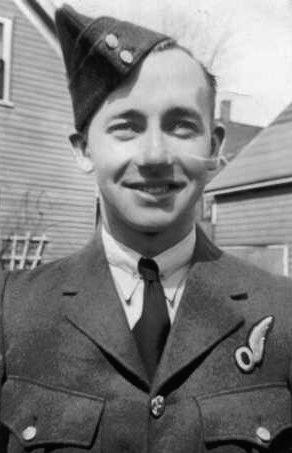
April 1942
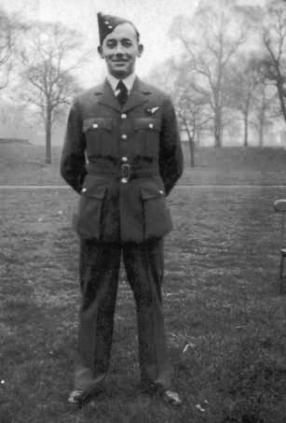
P/O Floyd Alvin Wile taken at Hyde Park,
London, England in March 1943 while on leave
just before the training began for the 617
Squadron crews

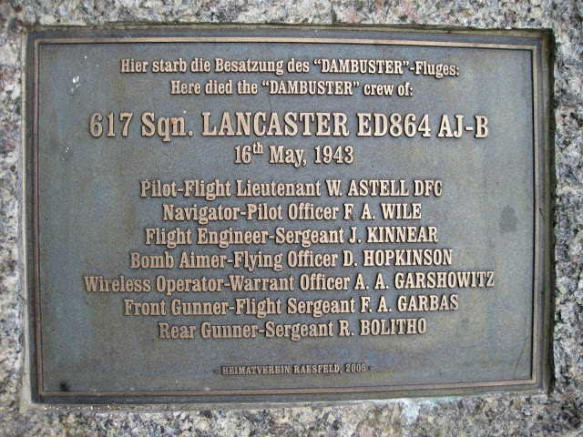
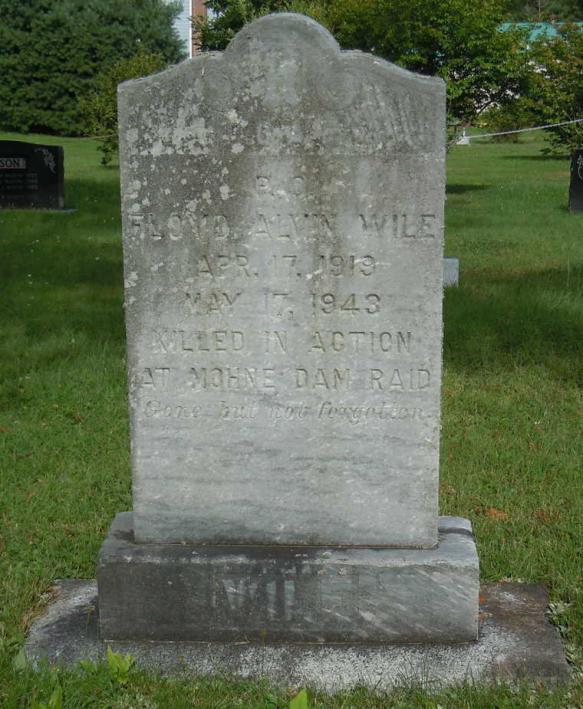
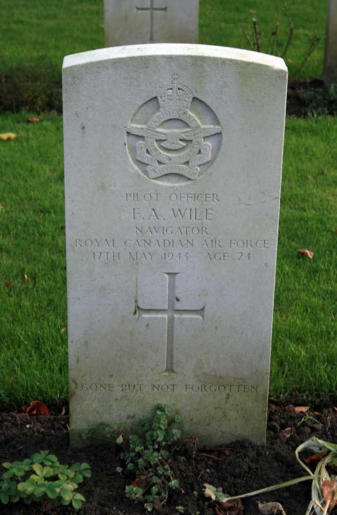
Saint Stephen's Anglican Church Cemetery
Stanley, Hants County, Nova Scotia, Canada
Reichswald Forest War Cemetery, Germany
Monument (2005) on the place where on Lancaster ED864- AJ-B crashed on May 16,
1943 (617 Squadron"Dambuster" of the RAF).
Remembering World War II
copyright © Wartime Heritage Association
Website hosting courtesy of Register.com - a web.com company


- World War I - Menu
- WWI Stories and Articles
- Photos - Yarmouth Soldiers
- Selection of World War I Songs
- WWI Casualties of Yarmouth, NS
- Those Who Served - Yarmouth, NS
- WWI Casualties Digby Co. NS
- WWI Casualties Shelburne Co. NS
- Merchant Mariners (1915) Yarmouth, NS
- Canadian Forestry Corps - Non Yarmouth Birth/Residence Enlistments
- US Draft Registry - Yarmouth NS Born


- World War II - Menu
- WWII Stories and Articles
- Telegraphist Air Gunners
- WWII Casualties of Nova Scotia
- US Casualties with NS Connection
- Far East/Pacific Casualties with NS Connection
- Merchant Navy Casualties Nova Scotia
- Nova Scotia WWII Casualties Holten Canadian War Cemetery
- D-Day Casualties - Nova Scotia
- CANLOAN Program Casualties - Nova Scotia
- Battle of the Bulge Casualties - Nova Scotia
- WWII Casualties Yarmouth NS
- Yarmouth Casualties - RCAF RAF Canadian Army WWII
- Yarmouth Co., Marriages WWII
- Casualties Non-Born/Residents with Connection to Yarmouth Co., Nova Scotia.
- WWII Casualties Digby Co., NS
- Non-Nova Scotian WWII Casualties Buried in Nova Scotia
- WWII RCAF Casualties Aged 16-18
- Brothers/Sisters Who Served - World War II













